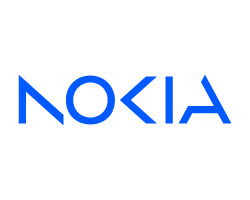Wi-Fi 6 is coming and it represents a giant step forward in how the networking ecosystem serves the needs of its users. The Wi-Fi Alliance has taken it upon itself to simplify the nomenclature of standards so that we don’t have to deal with complex designations and compatibility comparisons every time we review a piece of networking equipment. So, and taking advantage of the launch of Wi-Fi 6 (802.11ax), also the 802.11ac and 802.11n technologies receive a new designation: Wi-Fi 5 and Wi-Fi 4, respectively.
Wi-Fi 6 is therefore the same as 802.11ax, and is the sixth generation of Wi-Fi, the latest advance on a path of continuous innovation. This standard builds on the strengths of 802.11ac while adding efficiency, flexibility and scalability. In this way, it delivers more speed and empowers new and existing networks to support next generation applications. In fact, the new standard allows speeds of up to 7Gbps, which is far superior to the 866Mbps of the AC standard and the 150Mbps of the N standard.
What are the main advantages?
Wi-Fi 6 enables access points to support more customers in dense environments and offers a better wireless LAN experience. It also makes the performance of advanced applications such as 4K or 8K video, high-density, high-definition collaboration applications, and fully wireless workspaces more predictable. In addition, improved Wi-Fi coverage and 2.4 GHz support make Wi-Fi 6 ideal for IoT (Internet of Things) devices.
We then summarise the best that this emerging standard will bring:
Better performance: capacity for greater device density in an era when each user has more and more devices. This is possible mainly due to an OFDMA (Orthogonal Frequency Division Multiple Access) modulation that allows the bandwidth to be adapted and distributed according to the specific need of the equipment, allowing the simultaneous use of several equipments in the same time frame, reducing overhead and access latency. It also uses denser modulation, with 1024 QAM (Quadrature Amplitude Modulation), enabling a speed up of over 35%. Robust, high-efficiency signalling ensures better operation with significantly lower RSSI (Received Signal Strength Indication) and better interpretation of the Multipath RF phenomenon.
Greater bandwidth: delivers speeds up to four times faster than 802.11ac to efficiently support more applications. There is thus greater throughput capacity to respond to high-resolution photos, 4K/8K videos and voice apps such as WhatsApp, Viber, among others.
Longer battery life: with the new TWT (Target Wake Time) feature, there is better battery planning and efficiency in smartphones, tablets and IoT devices. When the network equipment is connected to the smartphone or PC with this feature, the access point can tell the equipment when it should switch off Wi-Fi and when it should “wake up” to receive data. The result? Less resources used and less battery consumption of endpoints.
Backward compatibility: Wi-Fi 6 is backward compatible, so it supports the huge installed base of equipment running on earlier wireless technologies.
Reliability and capacity: offers a consistent and reliable network connection for an integrated experience, and transmits more data to more customers than previous Wi-Fi standards, including IoT.
Why Wi-Fi 6?
As is often the case in the technological context, the emergence of this evolution in the Wi-Fi landscape is due to market and user demands in an increasingly global, flexible and mobile environment. We are currently witnessing an exponential growth in the spectrum of devices with access to wireless networks, which imposes on the Wi-Fi network infrastructure an additional effort in the management of authentications and information delivery. If you think about it, connecting to wireless networks is no longer a privilege but a commodity. Users assume that wireless networking is available everywhere, and they look for stable and fast networks.
For those doing the design and implementation of network infrastructures, this constantly changing landscape is a challenge. Architectures need to be correctly defined to ensure unrivalled responsiveness and scalability over time. Security and orchestration are also critical elements. And, of course, the extraction of analytics as something strategic for more sustained decisions that contribute to the smooth running of the network and above all to the performance and continued operability of the company.
Finding the right partner is essential to make the transition to a current infrastructure that meets the needs of each company. In the Networking & Infrastructure technological area, Warpcom presents differentiating arguments, with more than 20 years of experience in dealing with multivendor environments and with projects of the most varied complexity and dimension. We have certifications from the main industry players, such as Cisco, Nokia, Alcatel, VMware, Fortinet, Checkpoint, F5 Networks – in the various compenents – Networking & Infrastructure, Collaboration & Customer Experience, Data Center & Multi Cloud, Cybersecurity & Public Safety.
Contact us and find out how to make the most of the networks of the future, including Wi-Fi 6.
To explore the subject further, we suggest:
- Attend this webinar to get all the information on what’s new in the standard: https://youtu.be/0r9B4fwdhuI
- Watch this video with a more detailed description by one of those involved in the development of the protocol: https://youtu.be/r_ERuoLBFoM

























